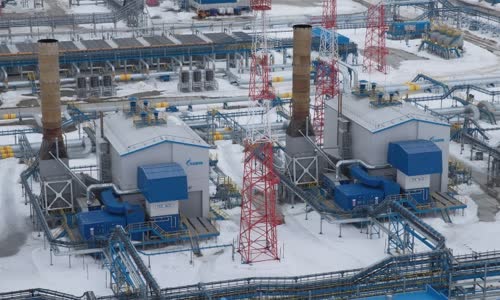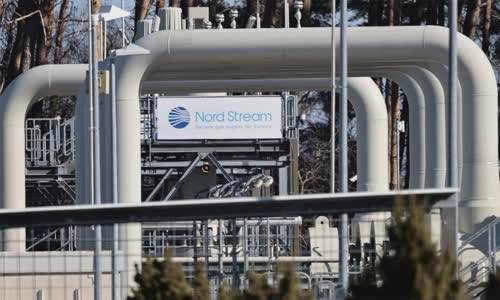Russian -European gas tensions started in the end of February, regarding the EU sanctions and increasing heat because Moscow responded.
Ukrainian President Volodymyr Zelensky on July 25 called on the European Union (EU) to strengthen Russian sanctions that Moscow was conducting a battle of gas to target the continent.

Photo: Reuters
According to observers, the battle of gas between Russia and the EU started on February 22, after German Prime Minister Olaf Scholz announced the suspension of the Nord Stream 2 pipeline project to respond to Russia independently.
The Nord Stream 2 project has long been a source of tensions between Germany and its allies, USA and Europe.
Just two days later, Russia launched a special military campaign to demilitarize and Non -Naziization Ukraine.
Gazprom gas treatment facility at Bovanenkovo mine on the Yamal peninsula, Russia in May 2019.
In response to the Russian campaign, the EU on March 3 launched a series of unprecedented sanctions, of which 7 Russian Banks from the Global Interbank Telecommunications Association (SWIFT).
However, the EU exempted the two major Russian banks that were closely related to the energy sector, showing the dependence of some EU countries on Russian gas.
Moscow continued to get more energy blow when US President Joe Biden on March 8 banned from importing gas and oil from Russia.
This was the period when Russia's Ruble dollar discounted records, forcing the Russian government and central bank to have drastic interventions.
On March 23, President Vladimir Putin announced that Russia would continue to sell gas to countries that were considered unfriendly by the country, but they asked them to pay in Ruble.
Russia's Gazprom Group on April 27 announced that the burning air for Bulgaria and Poland did not fully meet the payment obligations, the move that the head of the European Commission Ursula von Der Leyen criticized as the act of Song Tong.
Tensions rising up when Russia continued to cut gas on Finland on May 21, the water was prepared to submit an application to NATO.
Before Russia's moves, the EU allows members to pay gas contracts according to the terms given by the Russian side, in order to prevent the interruption of supply.
Russian gas transferred pipes for Europe.
However, Gazprom in mid -June announced a decrease in daily gas supply to Germany through Nord Stream 1 pipes, from 167 million m3 to 67 million m3, due to gas turbines with technical problems.
Gazprom Group on July 11 announced the deployment of the Nord Stream pipeline maintenance for 10 days, causing the gas flow to Europe to continue decreasing.
The Russian gas group on July 25 announced that it stopped operating an additional turbine at the Portovaya air compressor station of the Nord Stream 1 system according to the instructions of the monitoring agencies, after evaluating the technical status of the device.

Photo: Reuters
The decision will cause the flow on Nord Stream 1 from 27/7 to drop to 33 million m3/day, equivalent to 20% of the total capacity of the pipeline.
A facility on the Nord Stream 1 pipeline system in Lubmin, Germany on March 8.
Many European countries are concerned that Russia can extend the time to stop supplying gas to respond to a series of Western sanctions, disturb the storage plan for winter and push the gas crisis in the climbing area.
In the context of the increasingly complicated burning war, many EU countries are trying to find supply to replace products from Russia.
The European Commission on July 20 called on EU countries to reduce gas consumption to 15% in the coming months to ensure the reserve for the winter.
Ukraine's general called for Europe to increase Russian sanctions for conducting a gas war instead of trying to return the turbine to Gazprom.
Gazprom announced that it stopped an additional pneumatic turbine of the Nord Stream 1 pipe, causing the gas flow to Germany to fall half from July 27.



 Susan K Linton
Susan K Linton







